Table of Contents
Come join us now, and enjoy playing your beloved music and browse through great scores of every level and styles!
Can’t find the songbook you’re looking for? Please, email us at: sheetmusiclibrarypdf@gmail.com We’d like to help you!
Sorabji: In the Hothouse (from Two Piano Pieces) sheet music, Noten, partitura, spartiti 楽譜

Best Sheet Music download from our Library.

Please, subscribe to our Library.
If you are already a subscriber, please, check our NEW SCORES’ page every month for new sheet music. THANK YOU!
Browse in the Library:
Or browse in the categories menus & download the Library Catalog PDF:
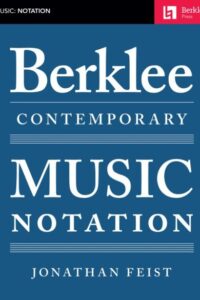
Who was Sorabji?
Kaikhosru Shapurji Sorabji: The Hermit of Modernist Maximalism
In the often-crowded pantheon of 20th-century composers, Kaikhosru Shapurji Sorabji (1892-1988) occupies a unique and enigmatic niche. A composer of staggering ambition, labyrinthine complexity, and self-imposed isolation, Sorabji crafted some of the most monumental, technically demanding, and stylistically idiosyncratic music ever conceived. His work, largely ignored during his lifetime and still challenging audiences today, represents a singular path through modernism – one defined by maximalism, intricate ornamentation, transcendental virtuosity, and a fierce, almost hermetic, independence.

Biography: A Self-Forged Identity
- Birth & Heritage: Born Leon Dudley Sorabji on August 14, 1892, in Chingford, Essex, England. His father was a Parsi engineer from India (thus the Persian-derived name Sorabji), and his mother was English-Spanish. This mixed heritage profoundly shaped his sense of identity, though he felt alienated from both cultures.
- The Name: Around 1914, he legally changed his name to Kaikhosru Shapurji Sorabji. “Kaikhosru” and “Shapurji” were Persian names chosen for their resonance and connection to ancient Persian history and Zoroastrianism, reflecting his deliberate construction of a unique persona.
- Musical Formation: Largely self-taught. He received some piano lessons in his youth but had no formal composition training. His musical education came through voracious listening, score study (especially Bach, Liszt, Busoni, Debussy, Ravel, Scriabin, Szymanowski, Medtner), and wide reading in literature, philosophy, and the occult.
- Early Career & Criticism: Worked as a music critic (under the pseudonym “S. Godfrey”) for outlets like The New Age and The New English Weekly from the 1910s to the 1930s. His critiques were famously acerbic, insightful, and often scathing, particularly targeting English musical provincialism and composers he deemed mediocre (which was most of them).
- The Recluse: Deeply disillusioned by the musical establishment and critical reception to his early performances (which were rare and often controversial), Sorabji gradually withdrew from public musical life starting in the late 1930s. After his mother’s death in 1940, he retreated almost completely to his secluded home “The Eye” in Corfe Castle, Dorset, where he lived with his companion, Reginald Norman Best, until his death. He forbade performances of his music for decades.
- The Ban Lifted: In 1976, pressured by a growing underground interest spearheaded by pianists like Yonty Solomon and Alistair Hinton (who later became his literary executor), Sorabji reluctantly lifted the ban on performances, provided he approved the performer.
- Death: Sorabji died on October 15, 1988, in Winfrith Newburgh, Dorset, leaving behind a colossal legacy of unpublished manuscripts.
Works: Monuments of Sound

Sorabji’s output is vast and overwhelmingly dominated by solo piano music, though he also composed orchestral works, chamber music, organ symphonies, and songs. His works are renowned for their extreme length, density, and technical difficulty, pushing the boundaries of playability.
- Key Masterpieces:
- Opus Clavicembalisticum (1930): His most famous (or infamous) work. A colossal 4+ hour piano epic in 12 movements (including fugues, passacaglias, toccatas, cadenzas), often considered one of the most challenging solo piano works ever written. A summit of contrapuntal complexity and virtuosic display.
- Symphonic Variations for Piano (1935-37): Another monumental work, exploring vast variation forms over an extended duration.
- Sequentia Cyclica super “Dies iræ” ex Missa pro Defunctis (1948-49): A massive cycle of 27 variations on the “Dies Irae” chant, demonstrating his intricate contrapuntal and transformative skills.
- 100 Transcendental Studies (1940-44): True to their name, these studies explore extreme technical and expressive demands far beyond those of Liszt or Chopin.
- Symphonies for Solo Piano: Several exist, including his Symphony No. 2 (“Jāmī”), blending orchestral textures and scope onto the piano.
- Gulistān – Nocturne for Piano (1940): A prime example of his lush, perfumed, and incredibly intricate “Persian”-inspired style.
- Concerti: He wrote several for solo piano and orchestra (e.g., Concerto per suonare da me solo e senza orchestra, per divertirsi), which are symphonic in scale and require superhuman virtuosity.
- Symphonies for Organ: Vast, complex works exploring the sonic possibilities of the instrument.
Analysis of Style: A Universe of Complexity
Sorabji’s style is instantly recognizable yet difficult to categorize. It synthesizes diverse elements into a unique and overwhelming whole:
- Maximalism: This is the defining characteristic. Sorabji embraced extremes:
- Length: Works lasting several hours are common.
- Density: Highly polyphonic textures, often with multiple independent melodic lines woven together in complex counterpoint (influenced by Bach, Busoni).
- Virtuosity: Demands transcendental technique – cascades of notes, complex polyrhythms, wide leaps, immense power, and extreme delicacy. He wrote as if the pianist had four hands.
- Ornamentation: Baroque-like ornamentation (trills, mordents, turns, grace notes) is ubiquitous, often layered and integral to the texture, creating shimmering, kaleidoscopic surfaces (influenced by Scriabin, Szymanowski, Middle Eastern/Persian music).
- Dynamic Range: From barely audible whispers to thunderous, percussive climaxes.
- Harmony: A complex fusion:
- Rooted in late-Romantic chromaticism (Scriabin, Szymanowski, early Schoenberg).
- Freely employed dissonance, clusters, and intricate chord structures.
- Often retained a sense of tonal centers or polarity, even amidst dense chromaticism (unlike strict atonality).
- Incorporated modal inflections, sometimes evoking Persian or Spanish flavors.
- Rhythm: Highly complex and fluid:
- Frequent use of polyrhythms (multiple simultaneous rhythms), cross-rhythms, and nested tuplets (triplets within quintuplets, etc.).
- Tempo often fluctuates wildly, requiring immense control.
- A sense of improvisatory freedom within highly structured forms.
- Form: Often large-scale, complex, and idiosyncratic:
- Favored variations (passacaglias, chaconnes), fugues, toccatas, and intricate multi-movement structures (like the Opus Clavicembalisticum).
- Forms were often expansive and cumulative, building through layered repetition and intensification rather than traditional development.
- Architecture was paramount, even in the densest textures.
- Influences (Assimilated, Not Imitated):
- Ferruccio Busoni: The most profound influence. Busoni’s ideas of “Young Classicism,” the transcendental potential of the piano, the fusion of Bachian counterpoint with modern harmony, and the concept of “Junge Klassizität” resonated deeply. Sorabji dedicated his Opus Clavicembalisticum to Busoni’s memory.
- Franz Liszt: Virtuosity, thematic transformation, large-scale forms, and the symphonic poem concept translated to piano.
- J.S. Bach: Contrapuntal mastery, structural rigor, and the use of forms like fugue and passacaglia.
- Alexander Scriabin: Mysticism, harmonic language, dense textures, and ecstatic climaxes.
- Karol Szymanowski: Sensuous harmony, intricate ornamentation (especially in the “Persian” inspired works like Métopes and Masques), and voluptuous textures.
- Debussy & Ravel: Color, texture, exoticism, and pianistic refinement.
- Mediterranean & Persian Cultures: While not authentically recreating these styles, he evoked their essence through ornamentation, melodic turns, and titles (Gulistān, Jāmī), reflecting his fascination with his Persian heritage and the wider Orient.
- Aesthetic: Sorabji’s music aimed for:
- Transcendence: Pushing beyond perceived limits of instrument, performer, and listener.
- Luxuriance & Opulence: A rich, sensual, almost decadent sound world.
- Intellectual Rigor: Underlying the sensual surface was meticulous structural planning.
- Individualism: A complete rejection of prevailing trends (serialism, neoclassicism, minimalism) in favor of his own uncompromising vision.
Legacy: From Obscurity to Cult Status
Sorabji’s legacy is complex and evolving:
- Decades of Neglect: His self-imposed exile and performance ban meant his music was virtually unknown outside a tiny circle for nearly 40 years. Manuscripts were inaccessible, unplayable, and unpublished.
- The Pioneers (1970s-): The lifting of the ban sparked interest. Pianists like Yonty Solomon, Michael Habermann, Geoffrey Douglas Madge (who made the first complete recording of Opus Clavicembalisticum in 1977), and later Marc-André Hamelin, Jonathan Powell, Fredrik Ullén, and Ronald Stevenson began the monumental task of learning, performing, and recording his works. This required immense dedication and technical prowess.
- Publication & Scholarship: The Sorabji Archive, established by Alistair Hinton (Sorabji’s literary executor), has been crucial in cataloging, editing, and facilitating the publication of scores (primarily by Dover Publications and The Sorabji Music Archive). Scholarly work is gradually increasing.
- Recordings Renaissance: The CD era and digital distribution (YouTube, streaming) have been transformative. Dedicated labels (Altarus, BIS, Toccata Classics, Piano Classics) have released numerous recordings, making this once-inaccessible music available globally. Complete cycles of the 100 Studies and other major works are underway.
- The Cult & The Challenge: Sorabji remains a “composer’s composer” and a cult figure. His music is not mainstream concert fare due to its extreme demands and duration. However, it commands deep respect and fascination among pianists, composers, and listeners drawn to its unique sound world and uncompromising vision. He is seen as the ultimate iconoclast, forging a path utterly independent of 20th-century musical fashions.
- Influence: His direct influence on other composers is hard to pinpoint due to his obscurity, but he stands as a powerful symbol of uncompromising artistic integrity and the exploration of extreme complexity and virtuosity. Composers interested in maximalism, intricate counterpoint, or pushing pianistic limits inevitably encounter his shadow.
- Copyright Controversy: The complex copyright status of his works (involving the Sorabji Archive and publishers) has sometimes been a point of friction within the community of performers and scholars seeking access.
Sorabji: The Solitary Giant
Kaikhosru Shapurji Sorabji was a true original. He inhabited a musical universe entirely of his own making, synthesizing diverse influences into a style characterized by unparalleled complexity, sensuous opulence, and transcendental ambition. His deliberate withdrawal from the world ensured decades of obscurity, but the dedication of pioneering performers and the power of recording technology have brought his extraordinary soundscapes to light. While his music remains challenging and demanding, it offers unparalleled rewards: a journey into a world of labyrinthine beauty, overwhelming power, and intellectual fascination. Sorabji stands as a testament to the power of an utterly individual artistic vision, uncompromising in its scope and ambition, a solitary giant whose monumental creations continue to challenge and inspire. He redefined the possible for the piano and left a legacy that continues to unfold as more performers dare to scale his musical Himalayas.
“In the Hothouse” is one of Sorabji’s most evocative and frequently performed works, serving as a perfect entry point into his dense, sensuous sound world. Here’s a detailed look at this fascinating piece:
Context: Two Piano Pieces (1918)
- Composed: 1918 (early in Sorabji’s career, age 26).
- Publication: First published in 1920, making it one of the earliest Sorabji works available in print.
- The Pair: “In the Hothouse” is paired with “Toccata” – a contrasting, hyper-virtuosic, and structurally complex piece showing his Busoni/Liszt influences. “In the Hothouse” offers the sensual, atmospheric counterpoint.
- Significance: Represents Sorabji’s early mastery of texture, harmony, and evocative atmosphere. It predates his gargantuan works but already displays his unique voice.
“In the Hothouse”: A Sensory Immersion
- Title & Imagery: The title instantly conjures an environment: humid, lush, teeming with exotic, overripe plant life, heavy perfumes, and stifling, enclosed heat. Sorabji translates this sensory overload into sound.
- Form & Structure: Relatively free and rhapsodic. It unfolds as a continuous, organic stream of consciousness rather than adhering to strict classical forms. Think of it as an elaborate, decadent arabesque.
- Style & Character:
- Extreme Sensuality: This is the defining feature. The music drips with lush, complex harmonies and suffocatingly rich textures.
- Harmony: Deeply chromatic, rooted in late Scriabin and early Szymanowski. Expect dense, constantly shifting chords: augmented harmonies, whole-tone inflections, unresolved dissonances creating tension, and sudden moments of surprising consonance like shafts of light piercing foliage. It avoids traditional tonality but gravitates around implied centers.
- Texture: Thick, layered, and constantly in motion. Tremolos, trills, rapid filigree (ornamental passages), and cascading arpeggios create a shimmering, humid haze. Melodies are often embedded within this dense undergrowth rather than standing clearly apart. The writing often requires the pianist to sustain multiple layers simultaneously.
- Rhythm: Fluid and flexible, often obscured by the sheer density of notes and ornamentation. Rubato (expressive tempo fluctuations) is essential. While less overtly complex polyrhythmically than his later works, the rhythmic flow feels organic and improvisatory.
- Dynamics & Articulation: Wide dynamic range, often shifting suddenly between extremes (e.g., thunderous climaxes collapsing into fragile whispers). Articulation varies from sharp staccatos to legatissimo passages that blur together. Pedaling is crucial for sustaining the harmonic haze and creating resonance.
- Ornamentation: Quintessential early Sorabji. Trills, mordents, turns, and grace notes are not mere decoration; they are the texture, creating constant flickering movement and contributing to the claustrophobic, teeming atmosphere. This foreshadows the intricate ornamentation dominating his mature style.
- Emotional Landscape: Evokes opulence, decadence, languor, mystery, stifling heat, hidden dangers, and overwhelming sensory stimulation. There’s a sense of beauty bordering on the grotesque due to its sheer intensity.
Influences Audible in “In the Hothouse”
- Scriabin (Primary): The harmonic language (mystic chords, unresolved dissonance, ecstatic climaxes), the sensual atmosphere, and the use of trills/tremolos are deeply indebted to Scriabin’s late sonatas and poems (e.g., Vers la flamme). Sorabji pushes Scriabin’s decadence further.
- Szymanowski: The opulent textures, perfumed harmonies, and “orientalist” exoticism (though abstracted here) strongly recall Szymanowski’s “Métopes” or “Masques,” which Sorabji admired deeply.
- Debussy: The focus on atmosphere, texture, and harmonic color (whole-tone scales, parallel chords) shows Debussy’s influence, though rendered with far greater density and intensity.
- Ravel: The virtuosic filigree and lush harmonies (think “Gaspard de la Nuit,” especially “Ondine” or “Le gibet”) are a touchstone, again amplified.
- Liszt: The rhapsodic freedom and dramatic gestures hint at Liszt, though filtered through a post-Scriabinesque lens.
Performance Challenges
- Texture & Balance: Maintaining clarity amidst the dense, rapidly shifting textures is paramount. The pianist must carefully voice chords and layers to prevent muddiness while sustaining the essential harmonic haze.
- Ornamentation as Texture: Executing the constant ornamentation smoothly and evenly, integrating it into the melodic and harmonic flow rather than treating it as mere decoration.
- Dynamic Control: Navigating the extreme dynamic contrasts and sudden shifts without sounding jarring. Creating a true pianissimo shimmer within complexity is incredibly difficult.
- Rubato & Phrasing: Applying expressive tempo fluctuations naturally while maintaining the overall structural coherence and forward momentum of the rhapsodic form.
- Pedaling: Using the pedal to create resonance and blend without causing harmonic blurring or loss of rhythmic definition. Requires exceptional sensitivity.
- Stamina & Focus: While shorter than his later works (typically 12-15 minutes), the piece demands intense concentration and physical control to sustain the atmosphere and navigate the technical intricacies.
Legacy & Significance of “In the Hothouse”
- Accessibility: It remains one of Sorabji’s most “accessible” works due to its evocative title, relatively shorter duration, and concentrated expression. It’s a frequent choice for pianists introducing audiences to Sorabji.
- Blueprint: It serves as a crucial blueprint for Sorabji’s mature style, showcasing his core preoccupations: sensuality, harmonic density, intricate ornamentation as texture, and atmospheric evocation, all present in embryonic form.
- Performance History: Despite Sorabji’s later ban, “In the Hothouse” (along with the Toccata) was one of the few pieces occasionally performed during his lifetime (e.g., by Sorabji himself and pianist Reginald Paul) and became a key work for the pioneering generation post-1976 (Yonty Solomon, Michael Habermann, Marc-André Hamelin, Jonathan Powell, Fredrik Ullén).
- Gateway Piece: It functions as a vital “gateway drug” into Sorabji’s world. Its success in conveying its intense atmosphere often encourages listeners to explore his more monumental, complex works.
- Standalone Masterpiece: Regardless of its role as an introduction, it stands as a perfectly formed and powerful piece of early modernist piano writing, a miniature tone poem of extraordinary evocative power.
“In the Hothouse” is a sun-drenched, overripe, and intoxicating immersion into Sorabji’s unique aesthetic. It captures the essence of his sensual maximalism in a concentrated dose, showcasing his debt to Scriabin and Szymanowski while asserting his own distinct voice. Its evocative power, technical brilliance, and relative brevity ensure its enduring place as one of his most beloved and frequently performed works, offering a compelling glimpse into the hothouse of Sorabji’s extraordinary musical imagination.
| Artist or Composer / Score name | Cover | List of Contents |
|---|---|---|
| Narciso Yepes The Finest Pieces from his repertoire Master Guitar |
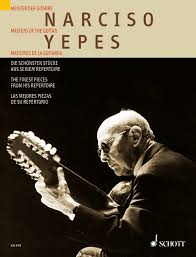 |
Narciso Yepes The Finest Pieces from his repertoire Master Guitar |
| Nardis – Miles Davis (Musescore File).mscz | ||
| Nardis (Musescore File).mscz | ||
| Nardis-Miles Davis With Bill Evans- (Musescore File).mscz | ||
| Naruto – Hokages Funeral (full Version) | ||
| Naruto – Hotaru no Hikari |
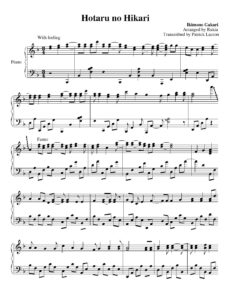 |
|
| Naruto – Wind |
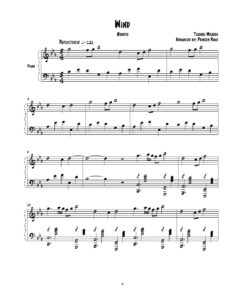 |
|
| Naruto Hokage’s Funeral – Naruto No Theme – Toshiro Maseda (Anime sheet music) |
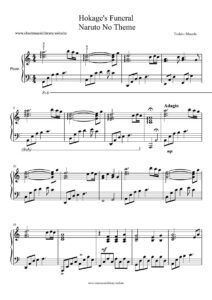 |
|
| Naruto Sadness And Sorrow Piano Solo by Toshiro Masuda | Naruto Sadness And Sorrow Piano Solo by Toshiro Masuda | |
| Nat King Cole – Easy Listenin’ Blues (piano sheet music) | Nat King Cole – Easy Listenin’ Blues (piano sheet music) | |
| Nat King Cole – Easy Listenin’ Blues (Piano Sheet Music) (Musescore File).mscz | ||
| Nat King Cole – Golden Greats |
 |
Nat King Cole – Golden Greats |
| Nat King Cole I’m in the mood for love | I’m in the mood for love | |
| Nat King Cole Lush Life Sheet Music |
 |
|
| Nat King Cole Smile (by Turner, Parsons and Chaplin) Piano Vocal Guitar chords |
 |
|
| Nat King Cole Song Album Of Recorded Hits |
 |
Nat King Cole Song Album Of Recorded Hits |
| Nat King Cole Unforgettable Piano, Vocal, Guitar Chords Legendary Performers Volume 9 |
 |
Nat King Cole Songbook |
| Natalie Imbruglia – Torn | ||
| Natasha Bedingfield – Love Like This | ||
| Natasha Pierre The Great Comet Of 1812 Vocal Selections of Te Musical |
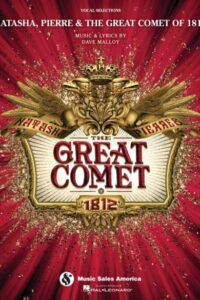 |
Natasha Pierre The Great Comet Of 1812 Vocal Selections of Te Musical |
| Nature Boy (Eden Ahbez) | ||
| Nausicaa of the valley of the wind | Nausicaa of the valley of the wind | |
| Navone, G. – 4 Composizioni Minuetto Preludio Pianto d un Bambino Preludio |
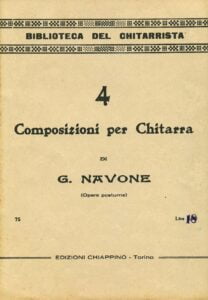 |
|
| Ne – Yo – Because Of You | ||
| Ne – Yo – Sexy Love | ||
| Ne – Yo – So Sick | ||
| Neat Feet (Musescore File).mscz | ||
| Ned Rorem Cycle Of Holy Songs For Voice And Piano |
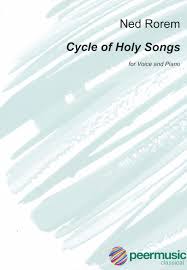 |
|
| Ned Rorem Early In The Morning | Ned Rorem Early In The Morning | |
| Ned Rorem String Quartet No. 4 |
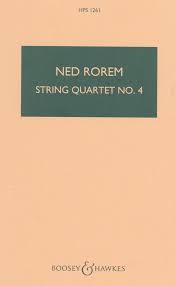 |
|
| Negro Spiritual Songbook Hayes 10 Spirituals For Solo Voice Med High Voice | Negro Spiritual Songbook Hayes 10 Spirituals For Solo Voice | |
| Nei giardini che nessuno sa (Renato Zero) | ||
| Neil Diamond The Essential Neil Diamond |
 |
 |
| Neil Diamond – He Ain’t Heavy He’s My Brother |
 |
|
| Neil Diamond – Hello Again |
 |
|
| Neil Diamond 12 Greatest Hits Vol II |
 |
|
| Neil Diamond Anthology Second Edition Easy Guitar |
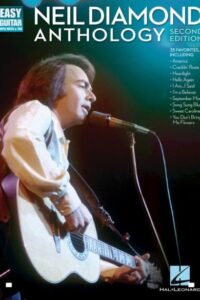 |
Neil Diamond Anthology Second Edition Easy Guitar |
| Neil Diamond Easy Piano Collection 2nd Edition |
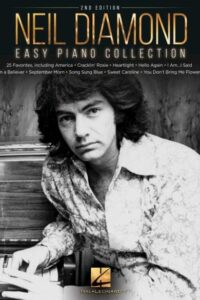 |
Neil Diamond Easy Piano Collection 2nd Edition |
| Neil Diamond September Morn |
 |
|
| Neil Gooding Back to the 80s (The awesome Musical) |
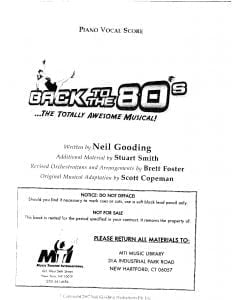 |
|
| Neil Sedaka – Breaking Up Is Hard To Do | ||
| Neil Young – Crazy Horse LIVE RUST 16 songs from the Movie Soundtrack |
 |
Neil Young – Crazy Horse LIVE RUST 16 songs from the Movie Soundtrack |
| Neil Young – The Best of Neil Young (Piano,Guitar & Voice Songbook) |
 |
Neil Young – The Best of Neil Young |
| Neil Young After The Goldrush SongBook |
 |
Neil Young After The Goldrush Book |
| Neil Young Decade SongBook |
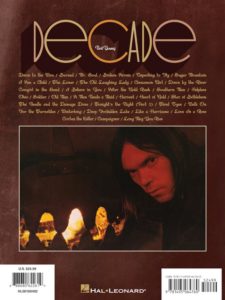 |
Neil Young Decade Book |
| Neil Young Greatest Hits Guitar Tab |
 |
Neil Young Greatest Hits Guitar Tab |
| Neil Young guitar anthology with Tablature |
 |
Neil Young guitar anthology |
| Nel cuore nell anima (Battisti) | ||
| Nelly Furtado – All Good Things | ||
| Nelly Furtado – Im Like A Bird | ||
| Neo Soul Guitar Book complete guide y Mark Lettieri Simon Pratt Kristof Neyens |
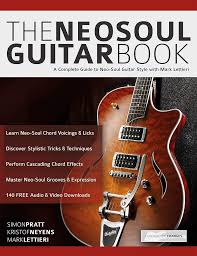 |
Neo Soul Guitar Book complete guide y Mark Lettieri Simon Pratt Kristof Neyens |
| Neon Genesis Evangelion – Fly Me To The Moon | Neon Genesis Evangelion – Fly Me to the Moon | |
| Nessun Dorma (Musescore File).mscz | ||
| Nettles And Graf.-The Chord Scale Theory & Jazz Harmony.-Advanced Music |
 |
|
| New Age Piano Made Easy – Edward Weiss |
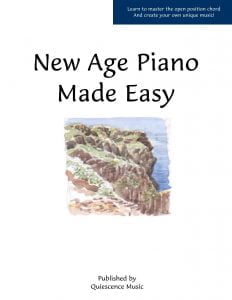 |
New age piano Edward Weiss |
| New Age Piano Techniques 1 |
 |
|
| New Age Solos Ultimate Piano Solos 39 of the best contemporary instrumentals |
 |
New Age Solos Ultimate Piano Solos 39 of the best contemporary instrumentals |
| New Born- Muse (Musescore File).mscz | ||
| New Conceptions For Linear Intervalic Jazz Improvisation (Olegario Diaz) |
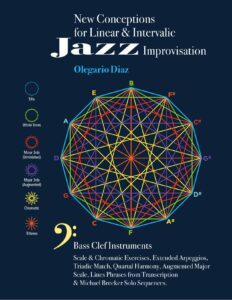 |
|
| New Ears For New Music Constantin Floros Kenneth Chalmers (Book) |
 |
|
| New Italian American Songbook, The Big Italian Hits made popular in America 2nd Edition Piano Vocal Guitar |
 |
New Italian American Songbook, The Big Italian Hits made popular in America 2nd Edition Piano Vocal Guitar |
| New Orleans Jazz Piano Solos Jazz Piano Solos Series volume 21 |
 |
New Orleans Jazz Piano Solos Jazz Piano Solos Series volume 21 |
| New Orleans RHYTHM & BLUES, The History of (Book) |
 |
|
| New Standards, The 64 Popular Modern Solos Piano Vocal Guitar chords |
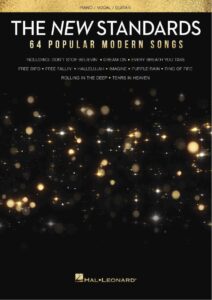 |
New Standards, The 64 Popular Modern Solos Piano Vocal Guitar chords |
| New World (Björk) | ||
| New York New York (Piano) |
 |
|
| New York State of Mind (Billy Joel) Jazz Piano Solo arr. sheet music |
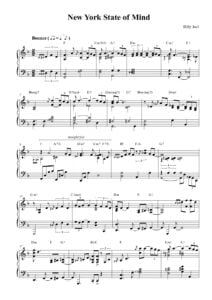 |
|
| New York Tango For Accordion By Richard Galliano | New York Tango For Accordion By Richard Galliano | |
| New York, New York John Kander Fred Ebb Jazz Standard arr. Carsten Gerlitz |
 |
|
| Newsies (Disney Musical) Piano Vocal Conductor score |
 |
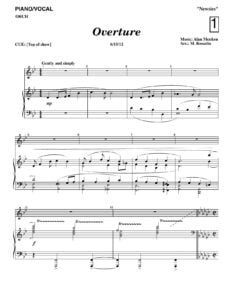 |
| Newsies Disney From The Broadway Musical Piano Vocal Selections |
 |
Newsies Disney From The Broadway Musical Piano Vocal Selections |
| Newsies JR Disney Musical Junior piano vocal score Conductor Score |
 |
Newsies JR Disney Musical Junior piano vocal score Conductor Score |
| Nicholas Britell – Succession HBO TV Series (Advanced Piano Solo Arr.) | Nicholas Britell – Succession HBO TV Series (Advanced Piano Solo Arr.) | |
| Nicholas Britell – Succession HBO TV Series (Piano Solo arr.).mscz | ||
| Nicholas Britell – Succession Main Theme Easy Piano Solo Arr |
 |
|
| Nicholas Britell – Succession Main Theme HBO TV Series Easy Piano Solo arr.mscz | ||
| Nick Cave Anthology Songbook |
 |
Nick Cave Anthology Songbook |
| Nick Cave Idiot Prayer Nick Cave Alone At Alexandra Palace Piano Vocal Guitar |
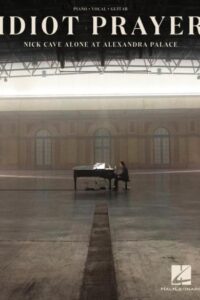 |
Nick Cave Idiot Prayer Nick Cave Alone At Alexandra Palaceed |
| Nick Drake Man In A Shed Guitar Tabs | Nick Drake Man In A Shed Guitar Tabs | |
| Nick Drake One Of These Things First Guitar Tabs | Nick Drake One Of These Things First Guitar Tabs | |
| Nick Drake Pink Moon Guitar Tabs | Nick Drake Pink Moon Guitar Tabs | |
| Nick Drake Things Behind The Sun Guitar Tabs | Nick Drake Things Behind The Sun Guitar Tabs | |
| Nick Lucas Chord Rhythm And Fill In Book For Guitar |
 |
Nick Lucas Chord Rhythm And Fill In Book For Guitar |
| Nick Lucas Keystone Folio For Guitar Plectrum Style | Nick Lucas Keystone Folio For Guitar Plectrum Style | |
| Nick Lucas Plectrum Guitar Method Volume 1 |
 |
Nick Lucas Plectrum Guitar Method Volume 1 |
| Nickel Creek Transcribed Scores Piano Vocal guitar TAB |
 |
|
| Nickelback – How You Remind Me | ||
| Nickelback – Rockstar | ||
| Nickelback All The Right Reasons Guitar Songbook With Tablature |
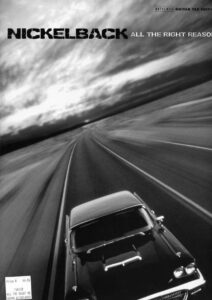 |
Nickelback All The Right Reasons Guitar Songbook With Tablature |
| Nickelback The Long Road Songbook Guitar TABs |
 |
Nickelback The Long Road Songbook Guitar TABs |
| Nico Rojas Lay y Egues Guitar Notation With Tablature | Nico Rojas Lay y Egues Guitar Notation With Tablature | |
| Nicolas Slonimsky Thesaurus Of Scales And Melodic Patterns |
 |
|
| Nicolas Slonimsky Writings On Music Russian And Soviet Music (Book) |
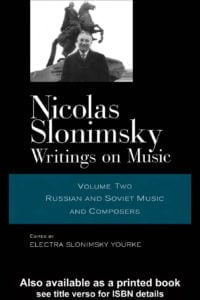 |
|
| Niente di più (Lunapop) | ||
| Nier – City Ruins – Rays Of Light Piano Solo |
 |
|
| Nier Automata – Peaceful Sleep Piano Solo |
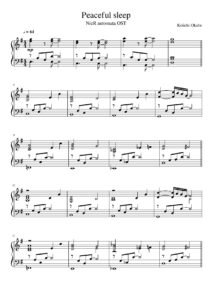 |
|
| Nier Automata – Weight Of The World – Piano Collections |
 |
|
| Nier Automata Piano Collections Weight Of The World (Musescore File).mscz | ||
| Nietzsche – Da geht ein Bach |
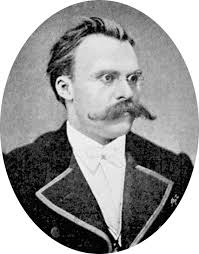 |
|
| Nietzsche – Das Fragment an sich | ||
| Nietzsche – Heldenklage | ||
| Nietzsche Aus der Jugenzeit 7 Lieder n. 1 | ||
| Nietzsche Unenlich! 7 Lieder no. 4 | ||
| Nightnoise The Music Of Nightnoise (piano solo) | Nightnoise piano solo | |
| Nights In White Satin – The Moody Blues (Easy Piano Solo Sheet Music) (Musescore File).mscz | ||
| Nightswimming (Musescore File).mscz | ||
| Nikita Koshkin – Collection Of Guitar Solos |
 |
|
| Nikita Koshkin The Fall of Birds |
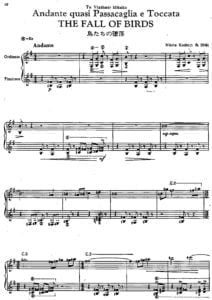 |
|
| Nikki Iles Friends Easy To Intermediate ABRSM |
 |
Nikki Iles Friends Easy To Intermediate |
| Nikki Iles Here’s That Rainy Day (Jazz Standard) |
 |
|
| Nikki Iles Jazz in Autumn 9 pieces for jazz Piano |
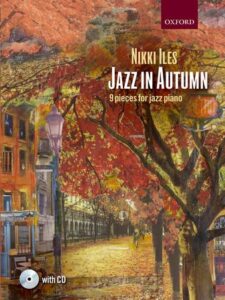 |
Nikki Iles Jazz in Autumn 9 pieces for jazz Piano |
| Nikki Iles Jazz in Springtime 9 pieces for jazz Piano |
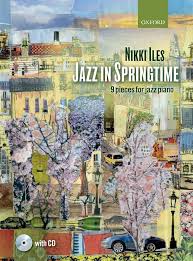 |
Nikki Iles Jazz in Springtime 9 pieces for jazz Piano |
| Nikki Iles Jazz on a Summer’s Day 9 pieces for jazz Piano |
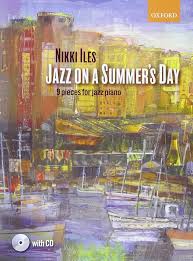 |
Nikki Iles Jazz on a Summer’s Day 9 pieces for jazz Piano |
| Nikki Iles Jazz on a Winter’s Night 11 classics for jazz Piano |
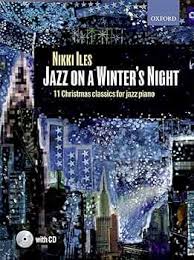 |
Nikki Iles Jazz on a Winter’s Night 11 classics for jazz Piano |
| Nikki Iles Piano Tales For Alice Grades 1-3 ABRSM |
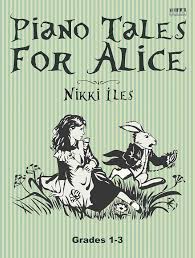 |
|
| Nikki Yeoh Berry’s Smoothie ABRSM Piano Exam Pieces Grade 1 2025 2026 |
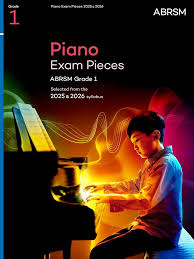 |
|
| Nikolai Sheiko Miniature Instant |
 |
|
| Nikolai Sheiko Prelude |
 |
|
| Nikos Mamangakis 22 Pieces For Solo Guitar |
 |
Nikos Mamangakis 22 Pieces For Solo Guitar |
| Nils Frahm – Ambre | Ambre Nils Frahm | |
| Nils Frahm – My Friend The Forest |
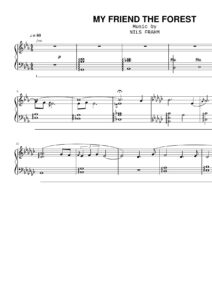 |
|
| Nils Frahm Anthology from Eins and Zwei (Piano) |
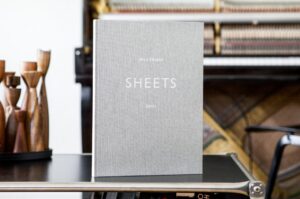 |
Nils Frahm Anthology from Eins and Zwei (Piano) Contents |
| Nina Simone – Dont Let Me Be Misunderstood Guiar TABs | Nina Simone – Dont Let Me Be Misunderstood Guiar TABs | |
| Nina Simone – Feeling good The Very Best of |
 |
Nina Simone Feeling good |
| Nina Simone – Play Piano with (including audio MP3 tracks) |
 |
Nina Simone Play Piano with |
| Nina Simone I Wish I Knew How To It Would Feel To Be Free Arr. By Willie Myette Piano Vocal Guitar | Nina Simone I Wish I Knew How To It Would Feel To Be Free Arr. By Willie Myette Piano Vocal Guitar | |
| Nina Simone My baby just cares for me | Nina Simone My-baby-just-cares-for-me | |
| Nina Simone Princess Noire The Tumultuous Reign of Nina Simone (Book Biography) by Nadine Cohodas |
 |
|
| Nina Simone, Best of – Original Keys for Singers – Nina Simone sheet music |
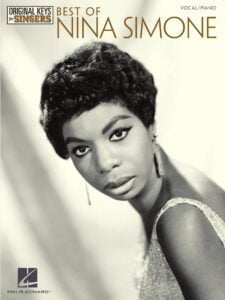 |
Nina Simone, Best of – Original Keys for Singers – Nina Simone sheet music |
| Nine Grands Solos De Concert For Trumpet And Piano (Vintage Sheet Music 1945) Contest Solos |
 |
Nine Grands Solos De Concert For Trumpet And Piano (Vintage Sheet Music 1945) Contest Solos |
| Nine Inch Nails – Discipline | ||
| Nine Inch Nails – Ghost1 | ||
| Nine Inch Nails – Pretty Hate Machine (Songbook) (Nine Inch Nails) Piano Vocal Guitar |
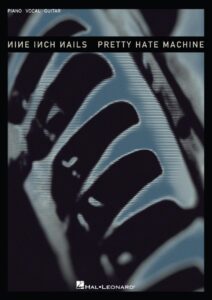 |
Nine Inch Nails – Pretty Hate Machine (Songbook) (Nine Inch Nails) Piano Vocal Guitar |
| Nine Inch Nails – The Fragile Bridge | ||
| Nine Inch Nails Adrift And At Peace By Trent Reznor |
 |
|
| Nine Inch Nails Piano Non Entity (Piano Vocal Sheet Music) |
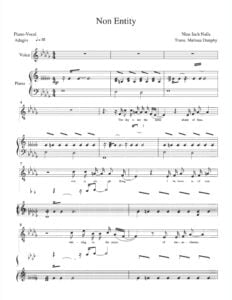 |
|
| Nineteenth Century Piano Music A Handbook For Pianists (By Kathleen Dale) (1954) | Nineteenth Century Piano Music A Handbook For Pianists (By Kathleen Dale) (1954) | |
| Nino Bravo Un Beso Y Una Flor Partitura (Piano Solo Sheet Music) |
 |
|
| Nino Bravo – Noelia (Piano and vocal) |
 |
|
| Nino Ferrer Le Sud Guitar Tabs |
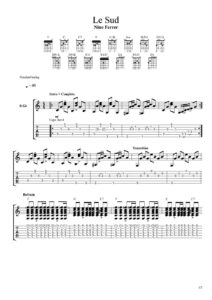 |
|
| Nino Ferrer Luz Casal Un Año De Amor Luz Casal C’est Irreparable |
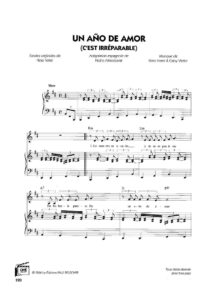 |
|
| Nino Ferrer Top Partitions Sheet Music Collection Piano Vocal Guitar chords |
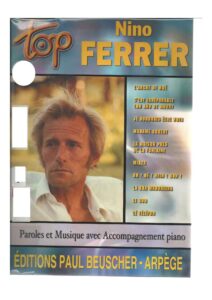 |
Nino Ferrer Top Partitions Sheet Music Collection Piano Vocal Guitar chords |
| Nino Rota The Godfather Waltz (Easy Guitar Arr.) Sheet Music And Tab | Nino Rota The Godfather Waltz (Easy Guitar Arr.) Sheet Music And Tab | |
| Nino Rota – A Time For Us – Romeo And Juliet (Musescore File).mscz | ||
| Nino Rota – Godfather Theme For Guitar |
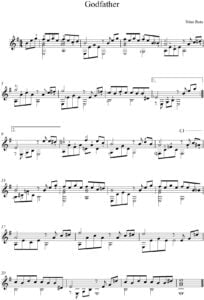 |
|
| Nino Rota – Legend of the Glass Mountain – Solo Piano |
 |
|
| Nino Rota – The Godfather Songbook |
 |
“Nino Rota The Godfather Trilogy Piano Vocal Guitar Songbook Contents |
| Nino Rota – The Godfather Waltz (Easy Guitar Arr.) (Musescore File).mscz | ||
| Nino Rota 15 Preludi Fifteen Preludes |
 |
|
| Nino Rota 5 Pezzi Facili For Flute And Piano |
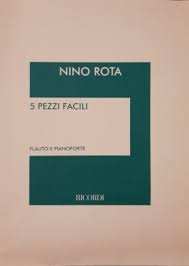 |
